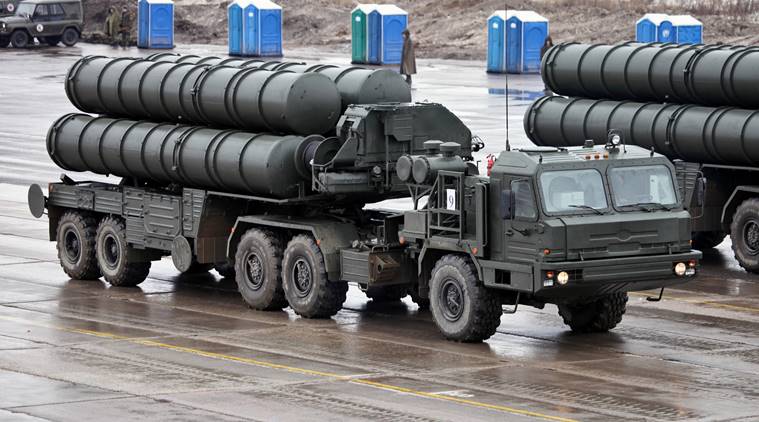S-400 missile deal to be signed during Vladimir Putin’s India visit this week: Moscow
The S-400 deal has been caught in diplomatic crossfire between US and Russia, with Washington threatening Delhi and other partners with sanctions if their defence deals with Russia go through.

New Delhi awaits President Trump’s certification of US waiver on purchase from Russia.
Ahead of Vladimir Putin’s two-day visit to India starting Thursday, his top foreign policy aide Yury Ushakov Tuesday said that the Russian President will oversee the signing of the S-400 air defence systems deal.
This is the first official confirmation from the Russian government on the signing of the deal with India. Putin and Prime Minister Narendra Modi will meet for bilateral talks on October 5. The S-400 deal has been caught in diplomatic crossfire between US and Russia, with Washington threatening Delhi and other partners with sanctions if their defence deals with Russia go through.
In Moscow, Ushakov told reporters that the “President is leaving for India on October 4” and would oversee the signing of the agreement. “The value of the contract will be more than USD 5 billion,” news agencies quoted him saying. In New Delhi, government sources told The Indian Express that the deal is “under discussion” and its signing during Putin’s visit is “quite likely”.
On Monday, Russian news agency TASS reported that Presidential spokesman Dmitry Peskov had confirmed that the theme of military technical cooperation will be on the agenda. “Putin is going to India on an official visit. A package of agreements is to be signed. It is true that the theme of military-technical cooperation will be on the agenda,” Peskov had said, responding to questions on the S-400 deal.
India and Russia have been discussing the purchase of the S-400 Triumf, (NATO calls it SA-21 Growler), a mobile, surface-to-air missile system since 2015. Several countries have shown interest in the S-400 rather than the American THAAD (Terminal High Altitude Area Defense) system though both are different weapon systems.
The S-400 deals have angered Washington. While the CAATSA (Countering America’s Adversaries Through Sanctions Act) was passed unanimously by the US Congress and signed by President Donald Trump, the US Congress has now passed a law granting waiver to some countries. India is one of the intended beneficiaries, but the US President has to personally certify the deal for a waiver.
CAATSA, if implemented in its stringent form, would have affected India’s defence procurement from Russia. The Russian maker of S-400s — Almaz-Antey Air and Space Defense Corporation, Joint Stock Company — is on the US list of 39 Russian entities.
After the Indo-US 2+2 dialogue early September in New Delhi, visiting US Secretary of State Michael R Pompeo said, “With respect to the S-400, no decision has been made. We are working to impose CAATSA Section 231 in a way that is appropriate and lawful and to exercise that waiver authority only where it makes sense. And we as a team, the national security team, will work on that, and as we continue to have these conversations with India about that, I think come to an outcome that makes sense for each of our two countries.”
Sources said the Americans expressed “understanding” of India’s defence needs, and Delhi had consistently argued that a “weaker India” is not in the best interest of the US, as both countries are faced with an assertive China in the Indo-Pacific region.
READ | A Russian deal, a US nod
The S-400 system can engage all types of aerial targets including aircraft, unmanned aerial vehicles (UAV), and ballistic and cruise missiles within the range of 400 km, at an altitude of up to 30 km. The system can track 100 airborne targets and engage six of them simultaneously.
The first S-400 systems became operational in 2007 and they are responsible for the defence of Moscow. It has been deployed in Syria in 2015 to guard Russian and Syrian naval and air assets. Russia has also stationed S-400 units in Crimea to strengthen its position in the annexed peninsula.





































No hay comentarios:
Publicar un comentario